- Jan 8, 2024
5 Fabulous Ways to Work a Jigging Spoon
Jigging spoons are exceptionally diverse – both in the species they produce and in the ways they can be fished. Learn several great winter spoon fishing techniques.


If Gary Dollahon is out fishing during winter, he almost always has at least one jigging spoon tied on and somewhat handy. If he’s strictly crappie fishing with Bobby Garland Crappie Baits (not uncommon), his spoon rod might be stowed. It’s still probably in easy reach, though, because you just never know!
A lifelong angler who resides in Broken Arrow, Oklahoma, Dollahon has been fishing jigging spoons for decades and he finds some applications year-round. However, they become an extra-big of his game plan during mid-summer and through the winter.
During winter, a simple heavy-metal spoon like a Cotton Cordell CC Spoon very effectively imitates a winter-chilled shad, and shad are important forage for white bass, black bass, stripers, blue catfish, crappie and more. Dollahon likes having a single bait that works well for many different types of fish and fishing situations. We’ll examine five of Dollahon’ favorite winter jigging spoon techniques.
1 – Vertical Jigging
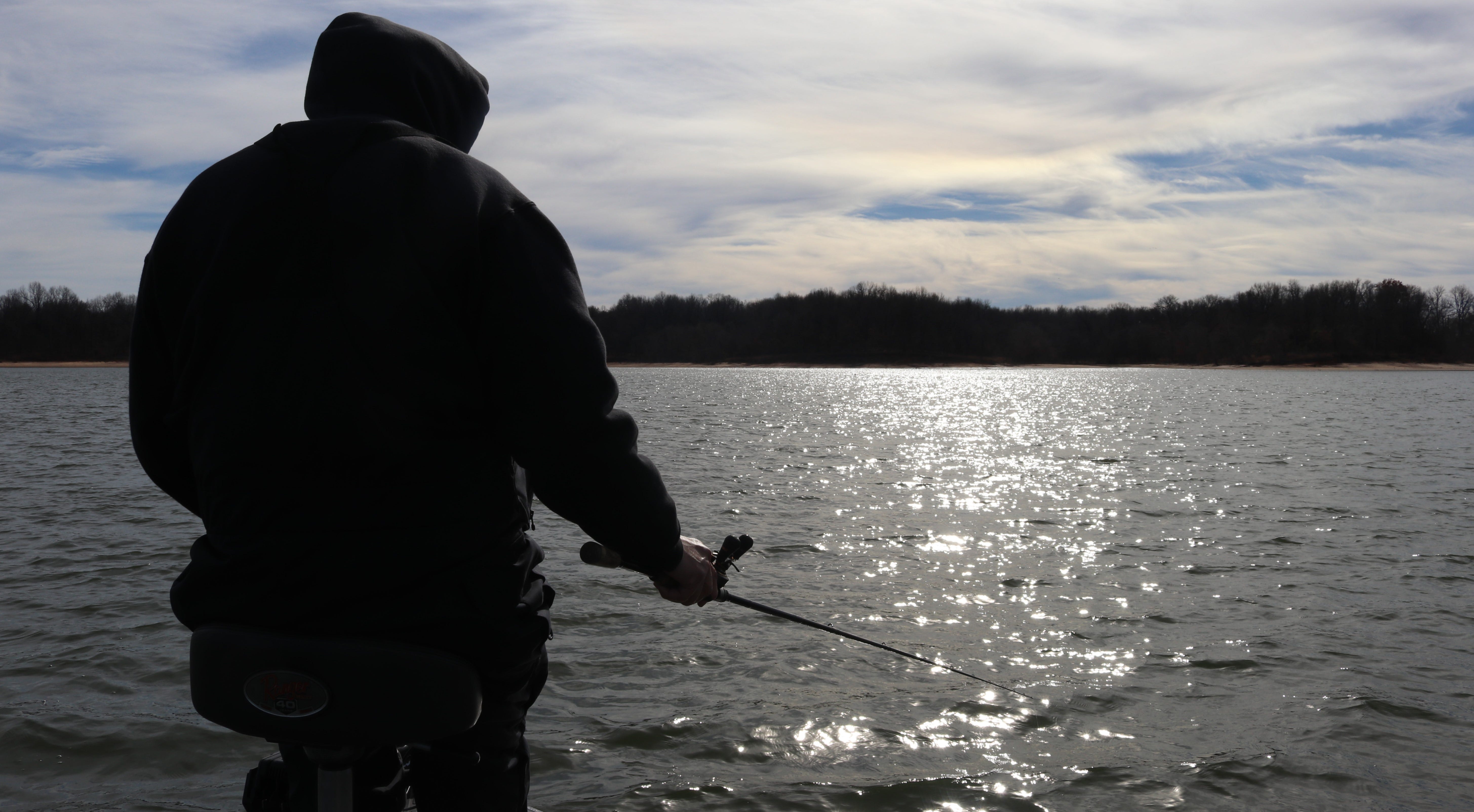

If you know only a single technique for fishing a jigging spoon, quite understandably, that technique is probably vertical jigging. It is what heavy metal spoons like the CC Spoon were designed to do, which is why are dubbed, jigging spoons.
The core technique is elementary. Get directly above fish or a place where you expect to find fish; drop the spoon to the depth you want to fish; and work the spoon by snapping your wrist to lift the spoon and then letting it flutter back down. Be extra ready as the spoon drops because that is when most fish will hit.
Dollahon mostly jigs a spoon right at the bottom during winter and he lets the spoon pound the bottom every time it drops. That creates sound and sometimes disturbs the bottom, drawing gamefish to investigate. If fish are suspended, which is usually apparent from watching electronics, a spoon can also be jigged at the level of the fish.
While the basic vertical jigging technique is straightforward, little variances can make a major difference some days, so it’s vital to experiment with things like the length and sharpness of every upward snap, and the cadence of jigging movements. Sometimes fish want very rhythmic jigging, short quick snaps, series of two or three rod snaps before letting the bait fall, or something else very specific. If you have the benefit of electronics that show both spoon and fish, pay careful attention to how fish react to various presentations. Lacking that visual, simply pay attention to what makes fish bite!
2 – Shaking
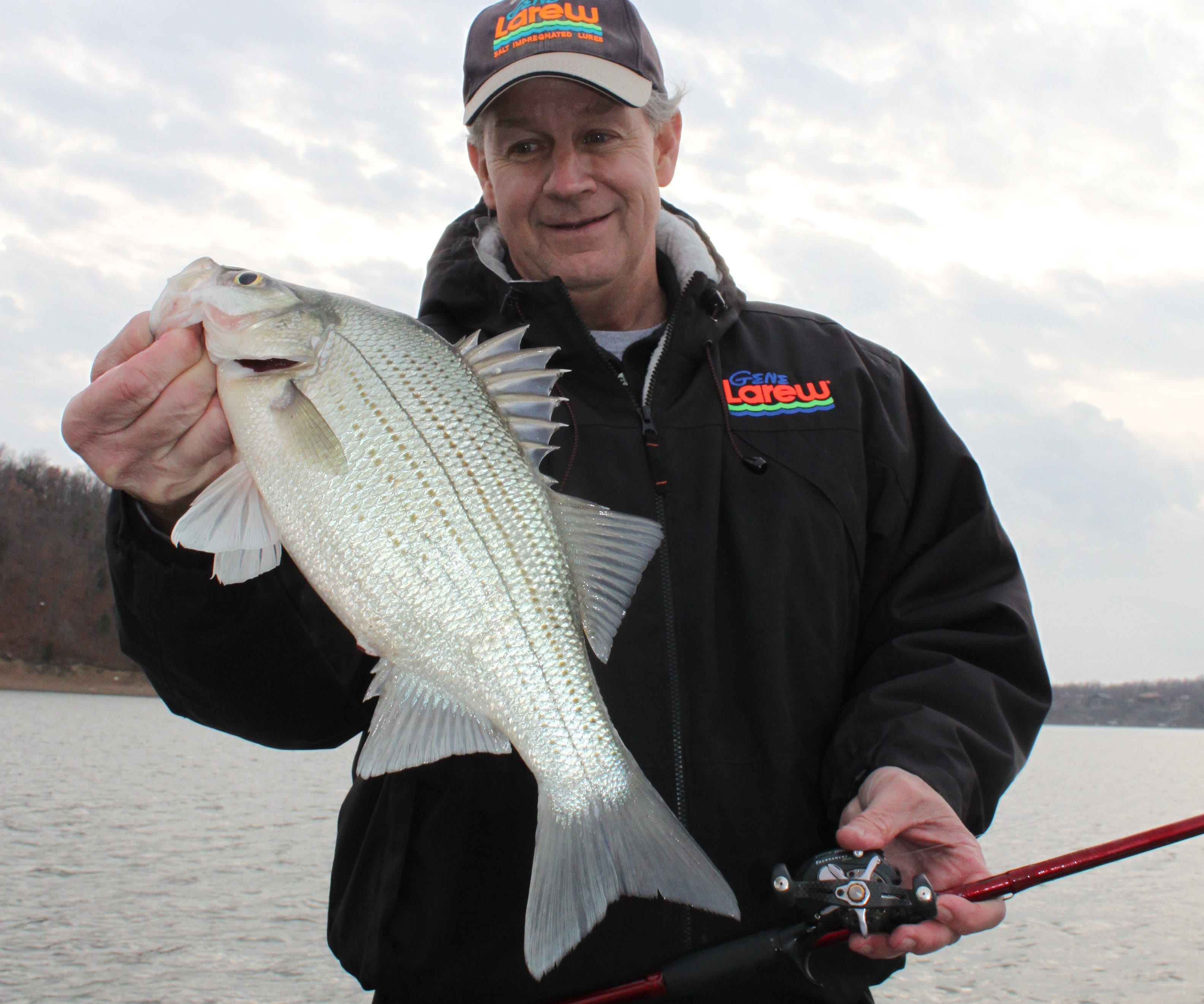

During winter, Dollahon mixes his vertical presentations enough that what he does part of time truly is a different technique from jigging. Fishing in vertical jigging spots, he drops the bait to the bottom, turns the reel handle just enough to gain solid tension, and then shakes his rod rapidly, straight up and down. It’s a quick, sharp shaking motion that makes the spoon move very erratically, but in a small space, close to the bottom.
He has found that when the water is cold, the shaking presentation sometimes prompts strikes from fish that won’t respond to a traditional jigging motion.
Dollahon will shake the spoon for several seconds, hold it dead still for a few seconds and then shake it again. Shaking and vertical jigging go hand-in-hand for Dollahon, and he’ll incorporate both presentations in most drops of the spoon during winter – especially early in the day, before fish have revealed preferences.
Some days the fish all show a clear preference of one technique. Other days, the white bass might respond to shaking while crappie or largemouth bass show preference to a quick jigging action. Often, the combination is important, with one motion calling fish to investigate and the other prompting most of the strikes.
3 – Stair-Stepping


When fish spread out along points or rocky shoreline slopes, instead of schooling up in easily targeted offshores spots, Dollahon uses the same spoon as a casting lure. He still works the bottom and relies on a lift-and-drop presentation. However, by casting the spoon and working it down the slope, he’s able to cover water and find active fish.
Dollahon positions his boat at the deep end of the zone he want to work, makes a long cast to shallower water and lets his spoon fall to the bottom. He watches the line as his spoon sinks, both to know when the spoon finds the bottom and to stay on alert for strikes that sometimes occur during the spoon’s initial descent.
The presentation is like working a plastic worm, with the spoon lifted and allowed to fall so it works down a slope in stair-step fashion. Each lift can be a single slight snap of the rod, two or three quick snaps or more of a sweep to lift the spoon more but with less pop.
It’s vital to pay close attention as the spoon flutters down, which might be only for a moment if the spot is flat or longer if it has gone over a ledge. Most fish will hit the spoon when it is falling.
4 – Fluttering
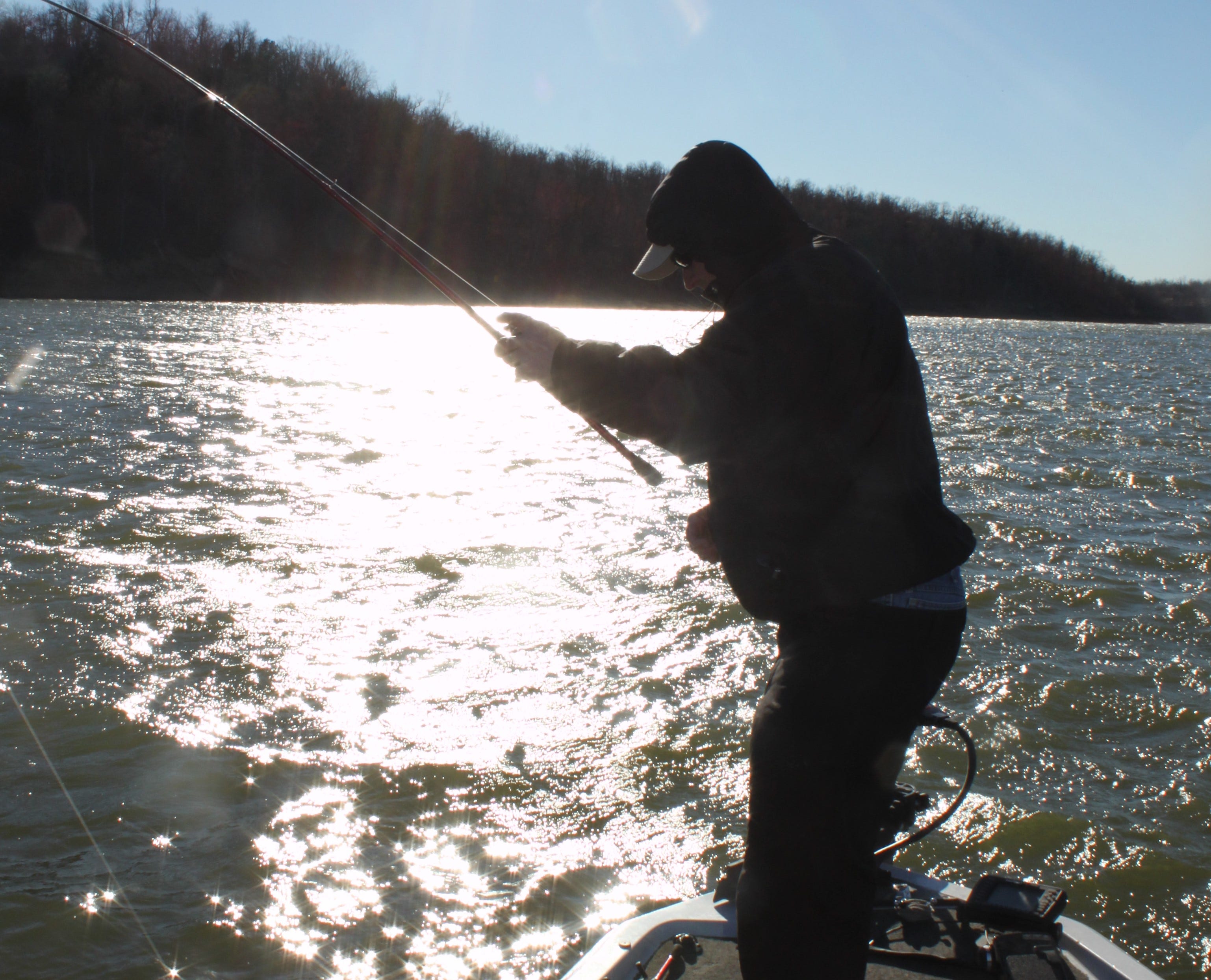

When bass and other gamefish suspend beneath docks, against steep banks and over brushpiles during winter, Dollahon turns to a technique he calls fluttering. He pitches his spoon parallel to a dock edge, into a bot slip, tight to a bluff or just past the location of a brushpile and allows the spoon to pendulum back so it flutters close to the cover.
With this approach, control and placement are important for presenting the spoon in the right zone and for minimizing snags. Consequently, Dollahon positions the boat close to his targets and makes short, controlled pitches.
Dollahon lets the spoon fall on a semi-slack line. He wants the line tight enough to create a pendulum effect and be able feather the spoon over brush but sufficiently slack to not hinder the spoon’s natural fluttering motion. He’ll add occasional gentle upward lifts, but mostly relies on the unaltered falling, fluttering action. Once the spoon swings beneath Dollahon, he reels up and makes another pitch.
Some snags are inevitable with this approach, but as long as you avoid setting the hook hard as soon as you feel anything, the weight of the spoon usually make it easy to shake out of cover, and often the brush top is sufficiently shallow to reel down to the spoon and free it with the rod tip.
5 – Swimming
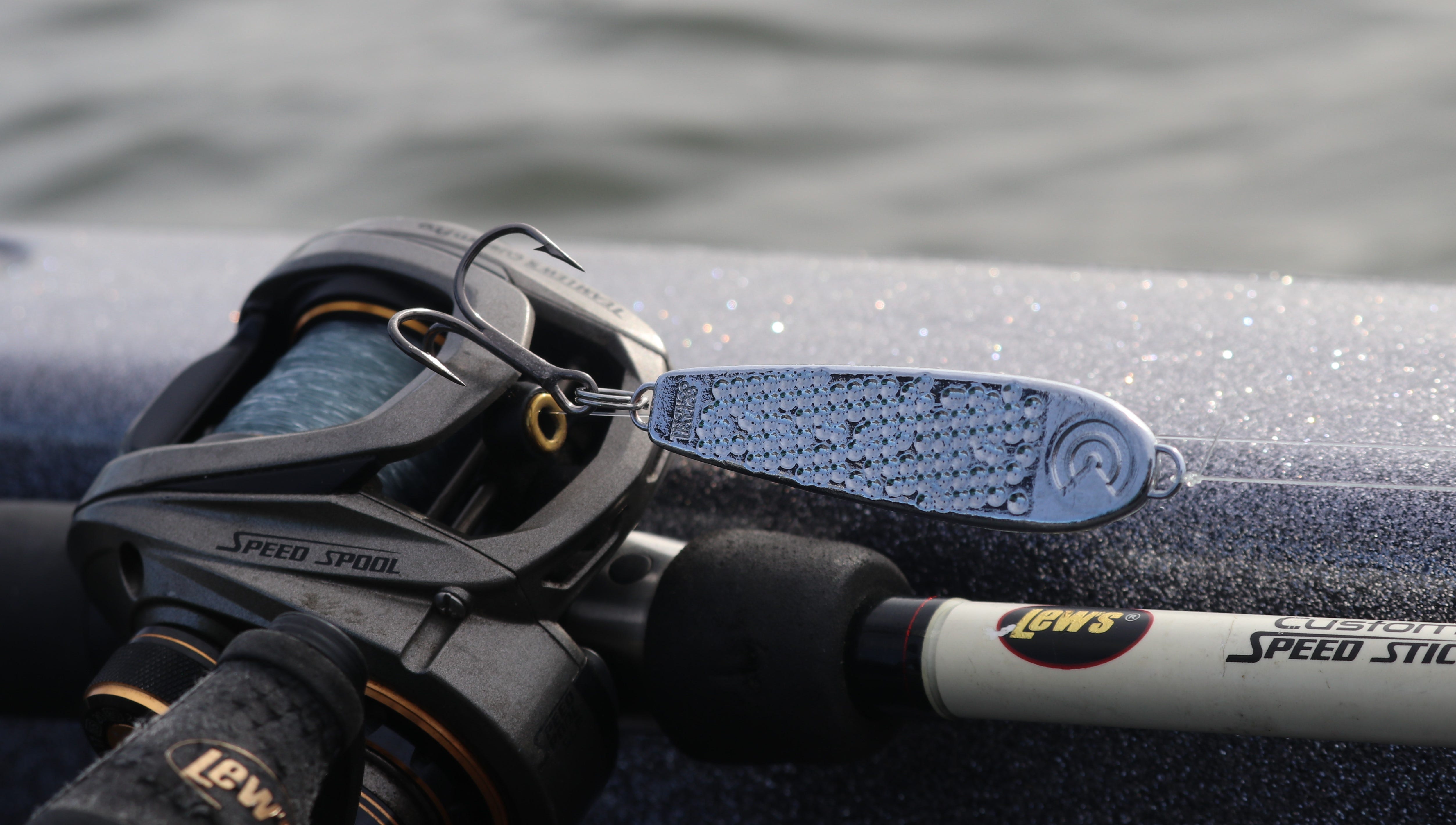

Finally, don’t overlook the virtue of a jigging spoon for making long casts to feeding fish and reeling steadily with the rod held high to trigger attacks. When stripers, white bass or black bass school on the surface, there a few better lures for prompting strikes because a jigging spoon can be cast a long distance and offers a small profile but big flash that really suggests a shad trying to flee the frenzied feeders.
Casting and cranking a spoon admittedly comes into play more when the water is warm than through the winter. That said, when shad are high in the water column, game fish will sometimes push them all the way to the surface to feed, even during mid-winter. When that happens, it’s valuable to remember the virtue of a jigging spoon because it is a lure you are likely to have tied on for other winter applications.
If fish are at the surface, start reeling as soon as the spoon hits the water. Keep your rod tip high and reel steadily. Cranking a spoon also works well for finding fish and triggering strikes in suspended baitfish schools. The overall approach is the same. Just let the spoon sink to the appropriate depth after casting and a reel a little slower than you would for surface-schooling fish.
New “Old” CC Spoon
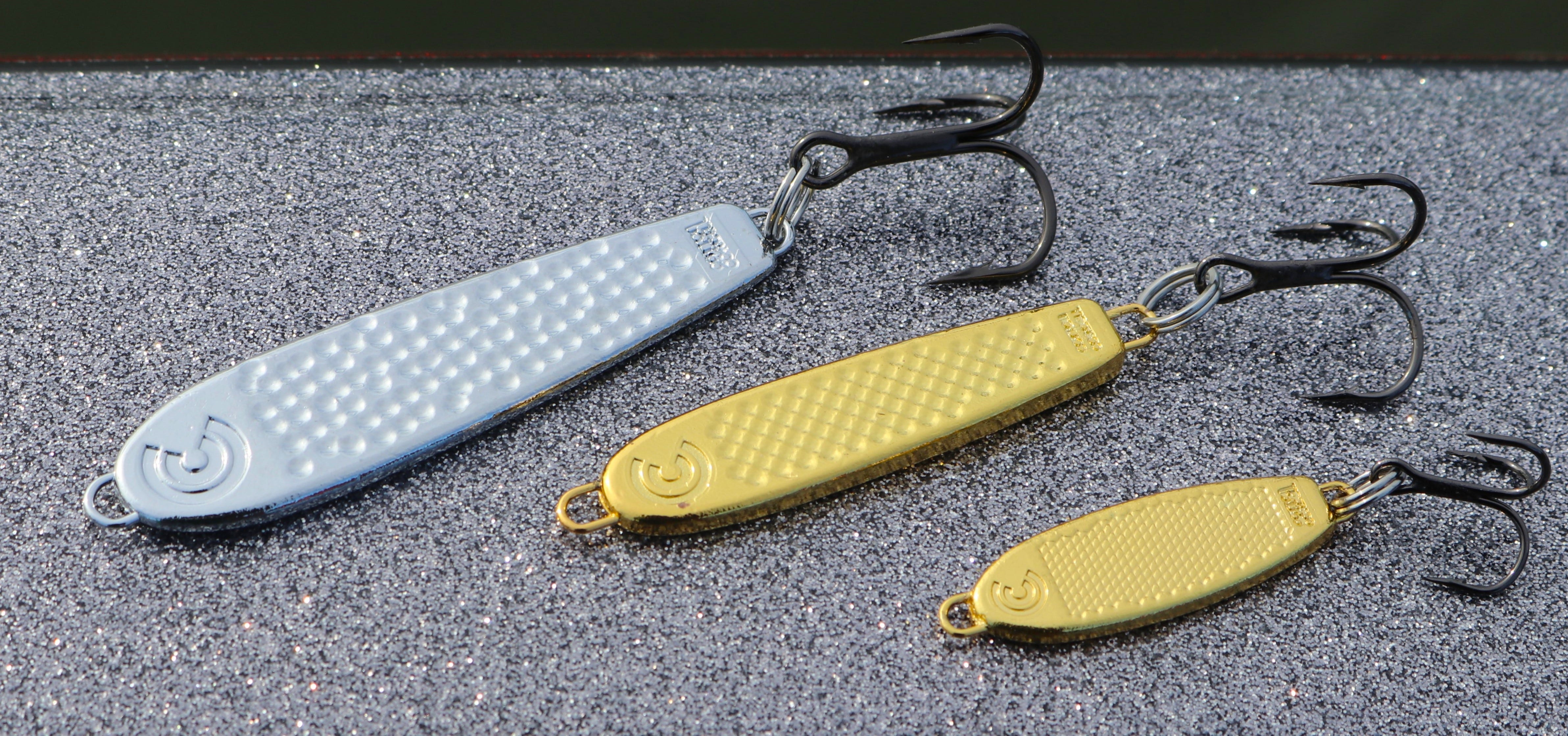

All sizes of the Cotton Cordell CC Spoon recently underwent a design change. However, instead of being a new shape, the change marks a shift back to this classic lure’s original design. Several years ago, the CC Spoon became a bit rounder and thicker. It still produced countless fish, but for years anglers have been clamoring for a return to the original design and the flutter that came with it. Cotton Cordell Lures recently obliged and while making the change also switched to a sharper, smaller diameter treble hook.



